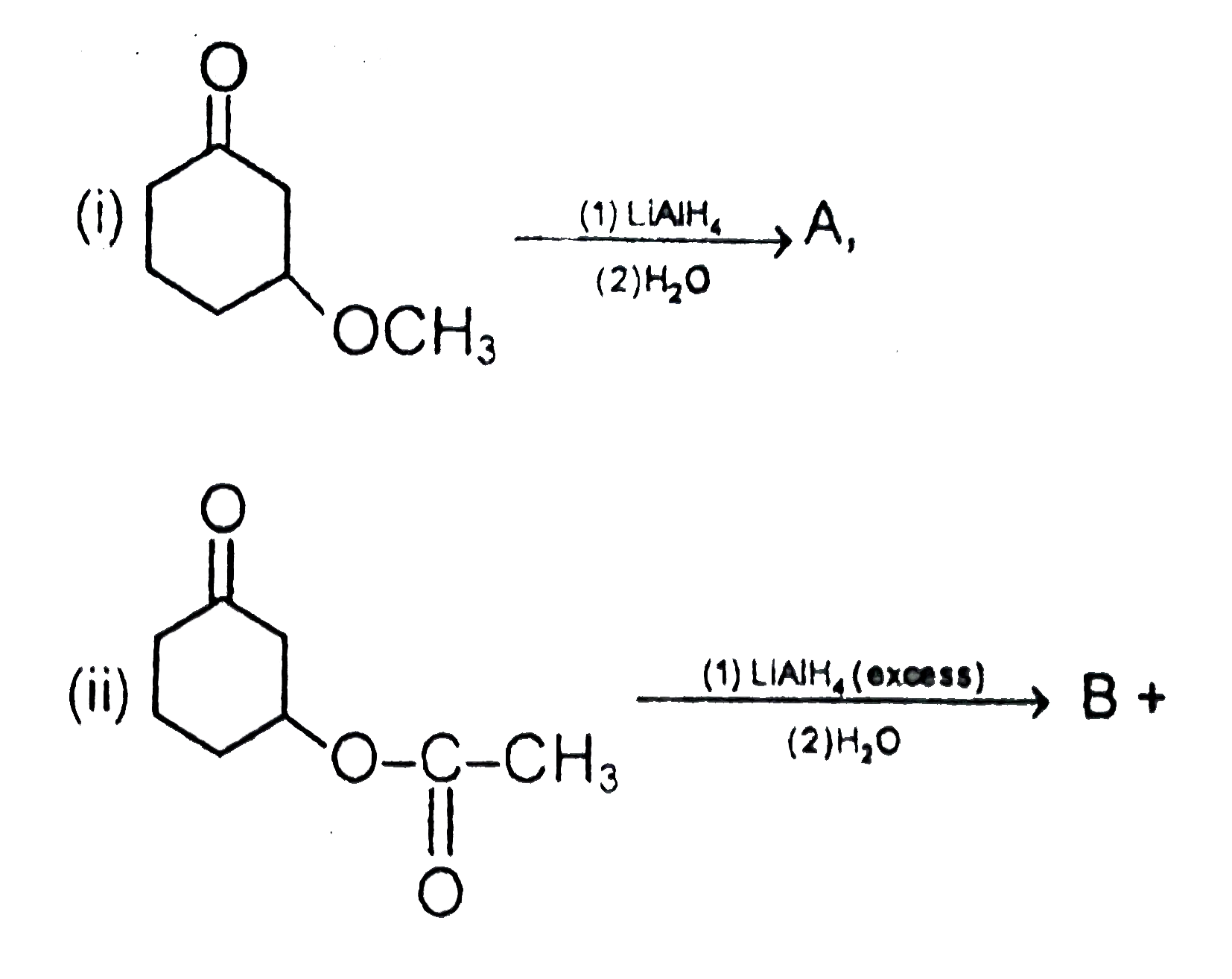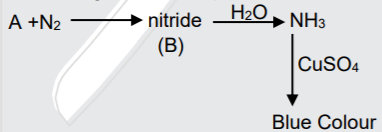In the given reaction

A and B will respectively be :Solution in Telugu




The correct Answer is:B

LiAlH4 Reduces -C≡N to −CH2−NH2
Topper's Solved these Questions
- BOOK - AAKASH SERIESCHAPTER - ALDEHYDES AND KETONESEXERCISE - LEVEL-II LECTURE SHEET (EXERCISE-II)28videos
ALDEHYDES AND KETONES
- BOOK - AAKASH SERIESCHAPTER - ALDEHYDES AND KETONESEXERCISE - LEVEL-II LECTURE SHEET (EXERCISE-III)11videos
ALDEHYDES AND KETONES
- BOOK - AAKASH SERIESCHAPTER - ALDEHYDES AND KETONESEXERCISE - LEVEL-I(EXERCISE-II)59videos
ALDEHYDES AND KETONES
- BOOK - AAKASH SERIESCHAPTER - ALCOHOLS, PHENOLS AND ETHERSEXERCISE - ETHERS (OBJECTIVE EXERCISE-4)50videos
ALCOHOLS, PHENOLS AND ETHERS
- BOOK - AAKASH SERIESCHAPTER - ALKYL AND ARYL HALIDESEXERCISE - OBJECTIVE EXERCISE - 4 (ASSERTION (A) & REASON (R) TYPE QUESTIONS)19videos
ALKYL AND ARYL HALIDES
Similar Questions
Which of the following give N- subtituted amide from ketoxime ?
03:33View SolutionAldehydes and ketons are susceptible to nuclephlic addition because carbonylgroup

Polar (due to electronegativeity difference between carbon and oxygen
positive charge on carbonyl compound towards nucleophilic . this addition is catalysed by acid . REactivity of carbonyl compound towards nuclephilic addotion increase with increase in teh electron deficiency at carbonyl carbon Thus (-I.E ) groups increase while (+I.E ) groups decreases the reactivity of carbonyl compound .
which among the following is most reactive towards nuclephilic addition02:04View SolutionEthylene is converted to X on passing through a mixture of an acidified aqueous solution of palladium chloride and cupric chloride. Which of the following reagents readily take part in addition reaction with X ?
View Solution(A): Alcoholic fermentation involves conversion of sugar into ethanol by the action of yeast.
(R): Fermentation involves the liberation of CO2 gas.02:06View Solution(A) Towards SN2 reaction, order of reactivity is CH3Br>CH3CH2Br>(CH3)2CHBr>(CH3)3CBr.
(R) Greater the stability of carbocation, greater will be its ease of formation from alkyl halide and faster will be the rate of SN1 reaction.02:18View Solution
CH3−CH2−OH
In the given reaction A & B are respectively:04:50View SolutionIn the given reaction A and B will respectively be :
01:50View SolutionIn a reaction between A and B, the initial rate of reaction was measured for different initial concentration of A and B as given ahead: what is the order of reaction with respect to A and B?
04:48View SolutionThe major organic products 'A' and 'B' in the given reactions are respective :
 03:31View Solution
03:31View SolutionGiven the following reaction sequence : A & B are respectively
 03:21View Solution
03:21View SolutionIn the given reaction :

What are A, B and C respectively ?02:45View SolutionA reaction of first order with respect to reactant A and second order with respect to reactant B. the rate law for the reaction is given by
View SolutionIn the given reaction sequence

(A) and (B) respectively are :07:19View SolutionGiven the following reaction sequence : A & B are respectively
04:34View SolutionA reaction is first order with respect to reactant A and second order with respect to reactant B. The rate law for the reaction is given by
05:59View Solution

